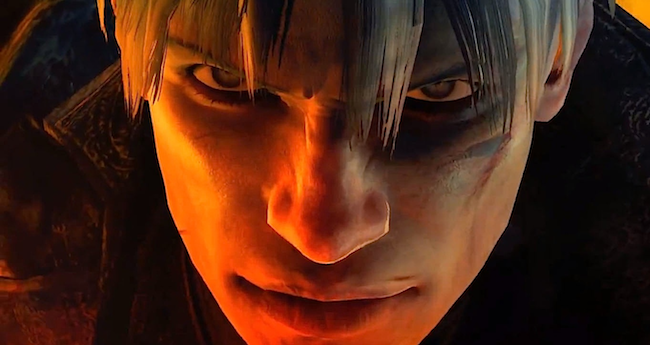
Together the Sons of Sparda reunited to defeat Mundus, the Demon Overlord who had been secretly manipulating the human population of Limbo City for years. It should have been a time of great celebration, but there was still a serious problem that the brothers faced. Vergil believed the human race were weak, dangerous, and that they needed to be protected from themselves. However, Dante disagreed by arguing that all humans deserved to be free and to make their own decisions.

This was quickly becoming a dark day for Vergil, and he had fought too hard to get to this moment. He truly loved his brother, but he knew what he was doing was right. This left him with no choice but to stand his ground, and this ultimately led to his defeat and humiliation. After everything they’ve gone through together to achieve this victory, how could his own brother betray him like this?
This would be the last time that players would see Vergil in the game as he quickly teleported himself to an unknown destination. Players familiar with the series should have been well aware that things were not going fare well for poor Vergil, despite being potentially more likable than the game’s hero, Dante. However, It still raised many questions, and it was with great excitement that we learned of the “Vergil’s Downfall” DLC that would allow us to follow the Antihero’s journey into darkness.
It may be quite intriguing for some fans to learn that this particular DLC is literally it’s own game within the experience. Yes, you will still be required to load the existing game first, but once it’s loaded, it will then present the player with a screen that allows you to choose which game you want to play. Once “Vergil’s Downfall” is selected, it will then take players to a simplified and unique version of the menu featured within the main game.

This DLC will re-introduce players to Vergil after his humiliating defeat to Dante. He is dying, alone and slumped over the grave of his father, Sparda. The majority of this experience will take place within a hellish form of Purgatory in which Vergil will confront the “Ghosts” of various people he was involved with during his life. Ultimately these experiences will explore the characters inevitable downfall, and his growing lust for power.
If we examine the DLC from a design perspective, it is almost identical to the original game. The narrative style and gameplay mechanics have been altered for this experience, but players will still be quite familiar with the way the rest of the game plays out. Vergil’s Downfall will take place over six chapters, and players will again be fighting through hordes of demons to build up the style meter, collecting orbs to unlock upgrades and exploring the various levels for hidden secrets.

With that being said, it is quite remarkable how different Vergil’s outing in Limbo feels by comparison to what we’ve explored with Dante. Visually, there is really only a shift in focus to the colour blue. (The colour of Vergil’s amulet) However, the gameplay mechanics feel substantially different and imply a much greater focus on timing and calculated swordplay. Those who embark on this DLC adventure will also be provided with an entire new move set to upgrade and experiment with, as well as a transportation ability which has replaced the grapple featured in the original game.
It’s no secret that Dantes revision in DmC was a significant source of controversy for the series, but we also believe it’s entirely possible for those fans who had a problem with the protagonist to approach this DLC and relate to Vergil a lot better. It’s unfortunate that the developers chose to take a step backwards and rely on cutscenes to explore Vergil’s downfall, but the experience does manage to separate itself with unique and compelling ideas. It’s a positive note that the game is longer than most DLC, but players can still expect to complete all six chapters within a couple of hours.
Our Conclusion
The new move set featured in Vergil’s Downfall is certainly different, but we found it introduced a far greater sense of empowerment to the player. The revised combat is calculated, intense and teleporting is an absolute riot when you truly get a feel for it. However, this is not to say it’s an entirely flawless improvement as Vergil’s secondary abilities prove to be quite slow and clumsy by comparison to Dante, but the DLC also doesn’t force the use of these particular combinations, which means it’s not quite an issue either.
On it’s surface, DmC: Devil May Cry – Vergil’s Downfall may appear to be a lot of the same. (Which isn’t necessarily a bad thing) However, it was to our surprise that this was not the case at all. The art style used in the design of the animated sequences certainly brings a unique charm of its own to Vergil’s story, but it’s actually many of the subtle changes that this particular DLC introduces to the core formula of the game that builds a compelling experience of its own that certainly warrants a return from fans to the world of DmC.












